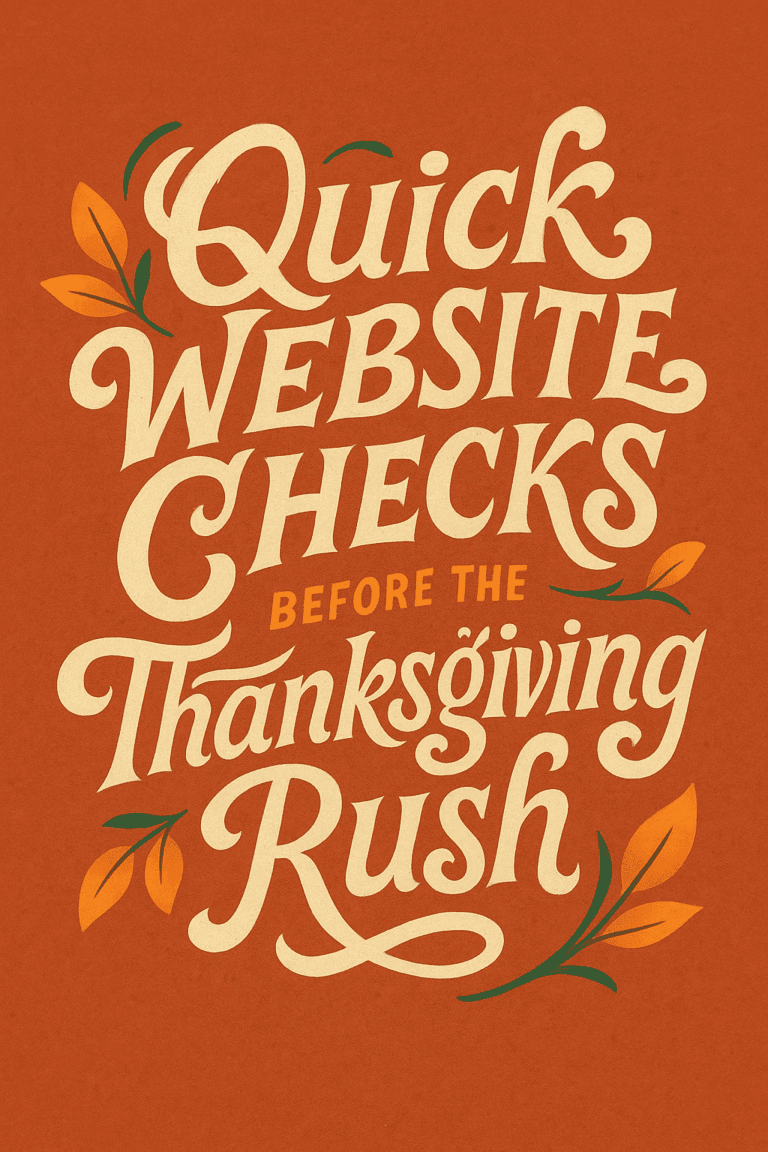
When you open your Google Analytics dashboard, what do you see? Maybe a handful of users each day. Maybe just a trickle of traffic from search. You might shrug and think, “Well, that’s just the way it is.”
But it doesn’t have to be. In fact, most small businesses and even medium-sized companies are losing out on up to 90% of their potential Google traffic. Not because their products or services are bad. Not because their market is too competitive. But because their website is throwing up invisible roadblocks.
In this post, we’ll show you where that traffic is leaking out, and more importantly, what you can do to stop the bleeding. Whether you’re in Longview, Washington or anywhere else, this applies to you.
1) Your Website Isn’t Even Indexed
One of the most common reasons websites get no Google traffic is because they aren’t even in Google’s index. If Google doesn’t know your pages exist, it can’t rank them.
How to tell: Type site:yourdomain.com into Google. If you get little or no results, that’s a red flag.
Causes:
- The site is too new and hasn’t been crawled yet.
- You have a noindex tag accidentally set.
- Your robots.txt file is blocking Google.
- You have technical errors preventing crawl.
What to do:
- Submit your sitemap to Google Search Console.
- Check for noindex tags and robots.txt rules.
- Use Search Console’s URL Inspection Tool to identify issues.
We’ve helped companies in Longview and throughout the Pacific Northwest resolve indexing issues that were silently killing their traffic. Here’s how we approach website redesigns with SEO at the core.
2) You’re Targeting the Wrong Keywords
Many businesses unknowingly optimize for keywords nobody actually types into Google.
Example: Instead of targeting “high-end remodeling,” target what your customers are actually typing: “kitchen remodel contractor Longview WA.”
Why this matters:
- Google traffic isn’t about getting #1 rankings for random phrases.
- It’s about showing up when your ideal customer is searching.
Fix it:
- Do keyword research using tools like Google Keyword Planner, Ahrefs, or SEMrush.
- Talk to your customers. What phrases do they use?
- Build pages that address those terms specifically.
This is the foundation of local SEO that actually brings in results.
3) Your Site Takes Forever to Load
Slow websites are traffic killers. Google measures page speed, and if yours is sluggish, you’re getting buried.
How bad is it?
- 53% of mobile users abandon a page that takes more than 3 seconds to load.
- Slower pages get lower rankings.
Check your speed:
- Google PageSpeed Insights
- GTmetrix
- WebPageTest.org
Common culprits:
- Bloated image sizes
- Too many plugins
- Poor hosting
What to do:
- Compress images.
- Upgrade your hosting. (We offer premium WordPress hosting.)
- Remove unnecessary plugins or scripts.
4) Your Content Doesn’t Answer the Question
Google is in the business of serving answers. If your pages don’t answer a searcher’s question clearly and thoroughly, you’re going to lose.
Examples of weak content:
- A services page that just lists what you do.
- A 300-word blog post with no substance.
- Filler content written just to “have something.”
Better approach:
- Write complete content. Answer follow-up questions.
- Use real-world examples, like case studies or client work.
- Use clear headings, bullet points, and internal links.
5) Your Title Tags Are Terrible
Your title tag is the single most important piece of SEO real estate.
Bad examples:
- “Home”
- “Services | Company Name”
- “Welcome to Our Website”
Good examples:
- “Roof Repair Longview WA | Free Estimate Today”
- “Best WordPress Hosting in Cowlitz County”
Tips:
- Keep it under 60 characters.
- Put the keyword early.
- Make it readable and enticing.
6) You Have No Internal Links
Google is like a spider crawling through your website. If pages aren’t linked to each other, they’re isolated.
Signs of poor internal linking:
- No links to your blog from key pages.
- Homepage links only to “Contact Us.”
- No hierarchy or site structure.
Fix it:
- Link new posts to at least 2 other posts or pages.
- Update older content with fresh internal links.
- Use descriptive anchor text.
7) You Haven’t Claimed or Optimized Your Google Business Profile
Local search is huge. If you’re a service-based business, your Google Business Profile matters.
What to check:
- Correct address and phone number
- Accurate business hours
- Recent photos and reviews
Pro tip: Add services, products, and updates to help improve local visibility.
8) You Don’t Have a Blog (or You Stopped Updating It)
A blog is one of the strongest long-term traffic drivers.
Why blogs work:
- Each post is another chance to rank.
- They attract users at all stages of the buying journey.
- They earn links and shares.
Need inspiration? Browse our blog for examples.
9) Your Website Isn’t Mobile Friendly
Over 60% of searches happen on mobile. If your site doesn’t perform well on phones, you’re in trouble.
Common mobile issues:
- Buttons too small
- Text too tiny
- Broken layouts
Test your site on your phone and with Google’s Mobile-Friendly Test.
10) You’re Not Updating or Monitoring Your Site
Google rewards active websites. If your site hasn’t changed in years, you’re sending the wrong signal.
Keep things fresh:
- Update content regularly.
- Add testimonials and new projects.
- Fix broken links and outdated info.
11) You Aren’t Measuring What Matters
You can’t fix what you don’t measure.
Track these metrics:
- Organic traffic (Google Analytics)
- Keyword performance (Search Console)
- Conversions (calls, forms, etc.)
We often uncover hidden issues during a full manual SEO audit.
90% Might Be an Understatement
Most traffic issues stem from a combination of problems. It’s rarely just one thing.
The good news? These are fixable. With a strategy and consistent effort, you can unlock the traffic you’ve been missing out on.
Want us to take a look at your site? Reach out. We’ll let you know where you stand and what to fix first.





